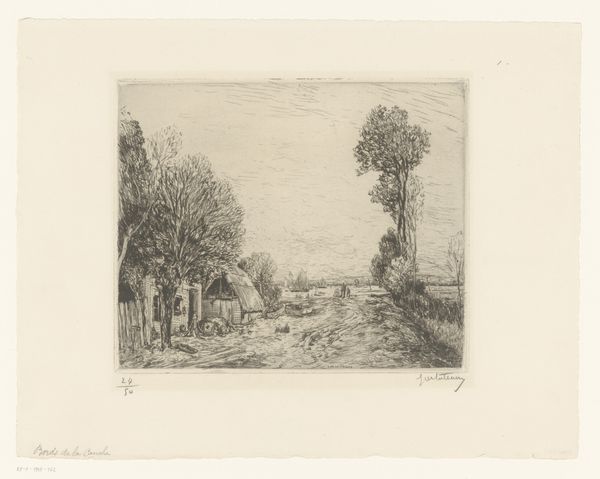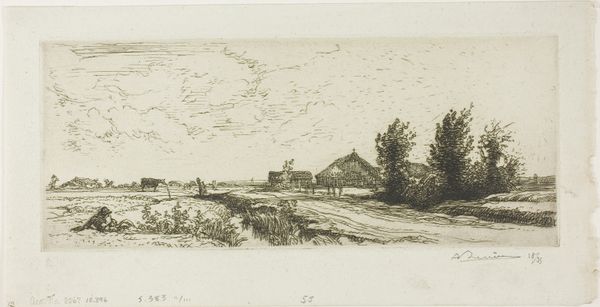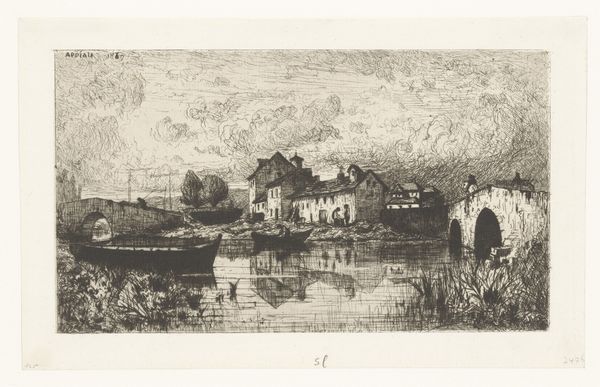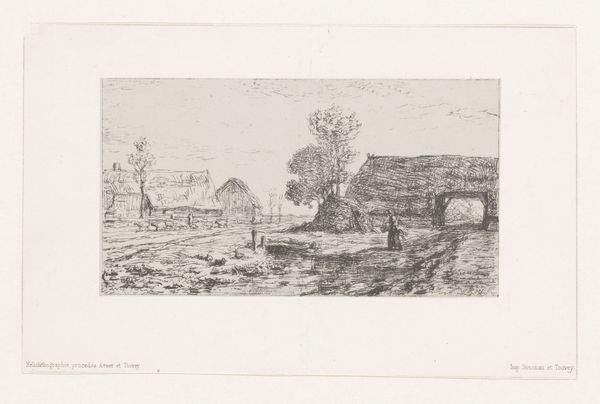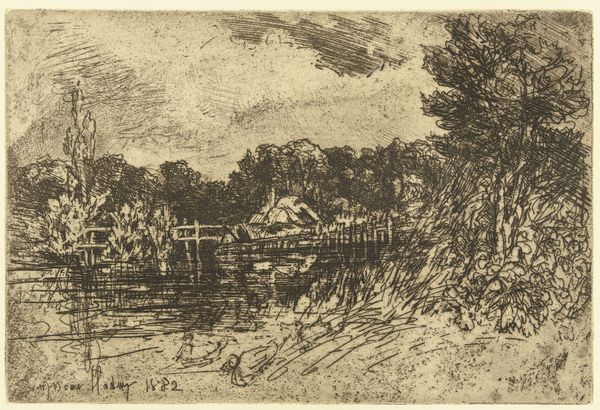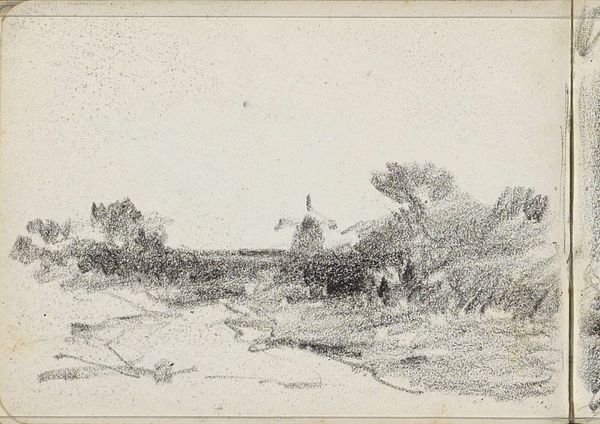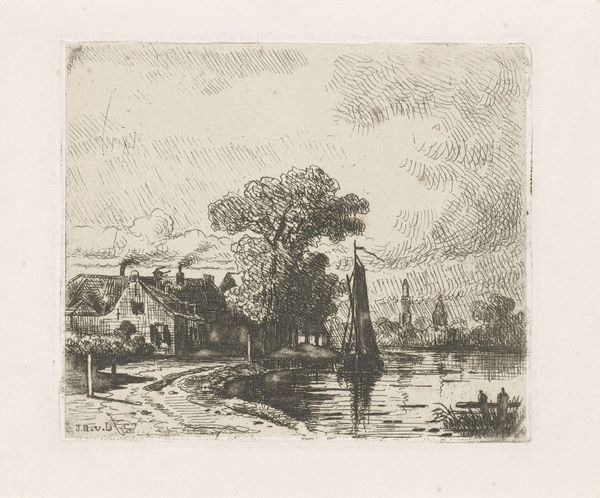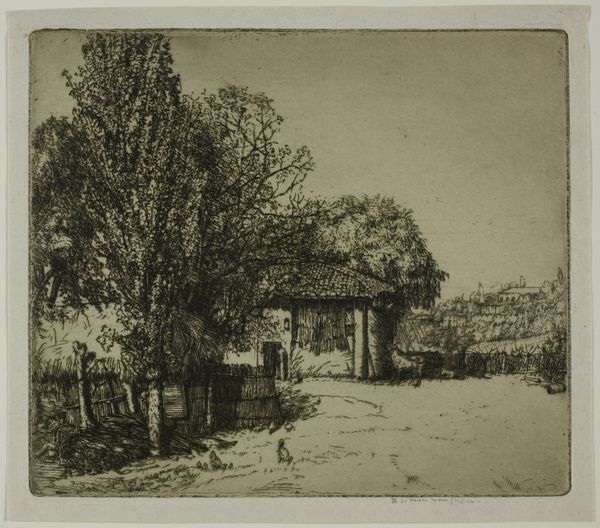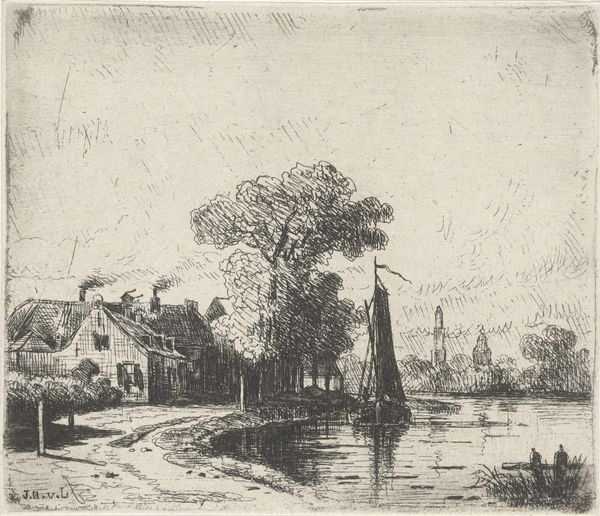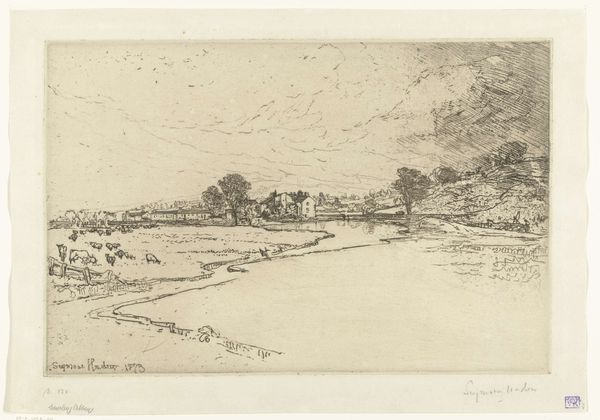
Dimensions: 74 mm (height) x 99 mm (width) (plademål)
Editor: This is "Ved Fuglevad" by Louise Ravn-Hansen, made in 1898. It's an etching, and there's something so tranquil about the scene—the ducks on the water, the windmill in the distance. It feels like a snapshot of a peaceful, rural life. What do you see in this piece from a historical perspective? Curator: What strikes me is how Ravn-Hansen engages with the prevailing artistic trends of the late 19th century while subtly challenging the dominant narratives. Landscapes like this, seemingly idyllic, often served as nationalist statements, connecting the public to the land. But how might the choice of printmaking complicate this reading? Editor: I hadn't thought of that. Prints were more accessible, weren't they? Curator: Exactly. So, is Ravn-Hansen aiming for a wider audience, perhaps democratizing the landscape? Or could it be a commentary on the industrialization encroaching on rural life, with the mass-producible print mirroring the rise of mass production? Note the very precise linework achieved through the etching process and contrast with painting techniques. Editor: That's fascinating. It feels less like a celebration of nature and more like an observation, almost a study. The inclusion of the windmill now feels…less romantic. Curator: Precisely. Consider also how institutions like the SMK shaped artistic production. Ravn-Hansen, a woman artist, navigating a male-dominated art world, producing a print – how does that influence our reading of "Ved Fuglevad"? Editor: So much to unpack! I initially just saw a pretty landscape. I realize now the layers of socio-political context at play. Thank you! Curator: It highlights the complex interplay between artist, artwork, and audience. Every element is part of that historical conversation.
Comments
No comments
Be the first to comment and join the conversation on the ultimate creative platform.

